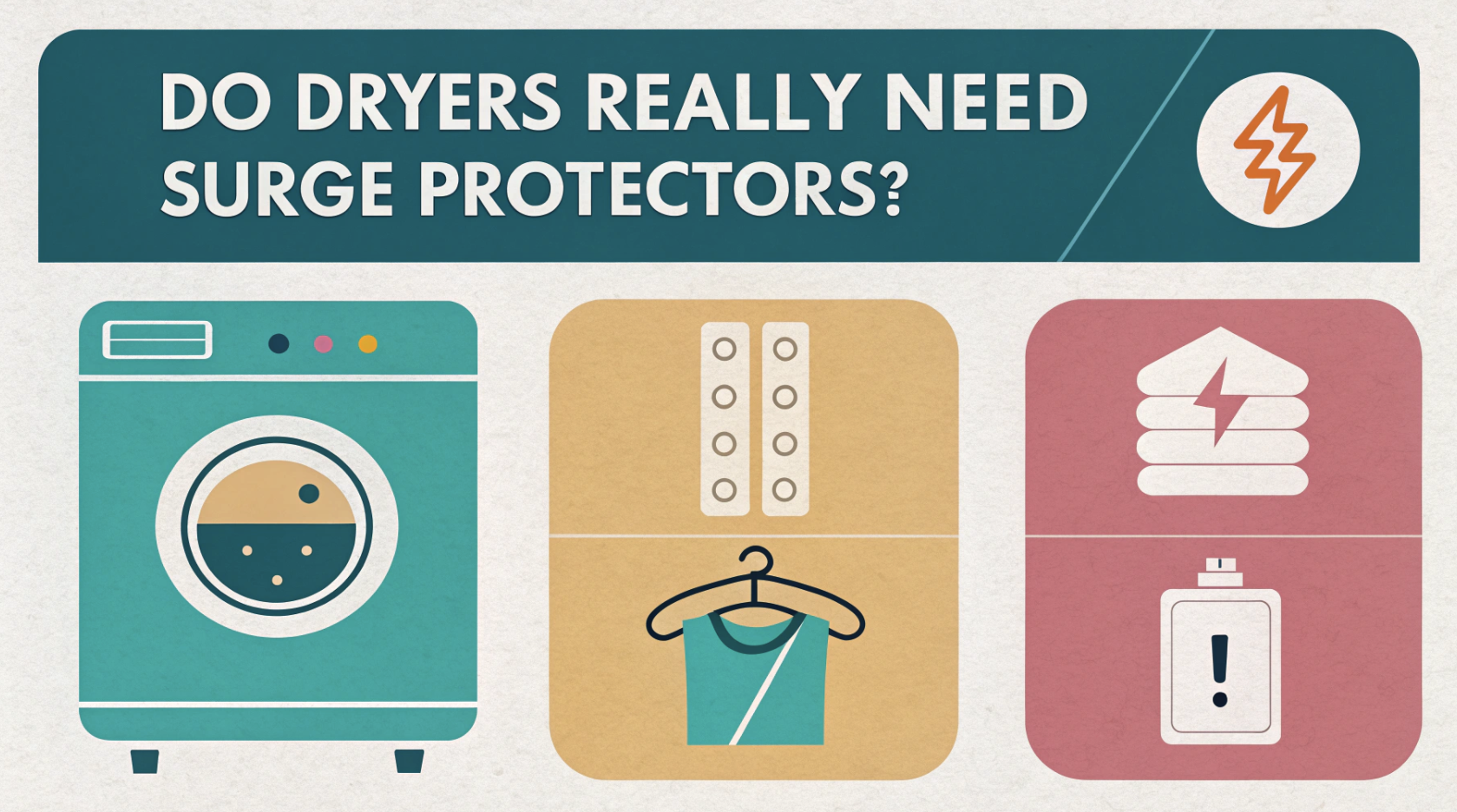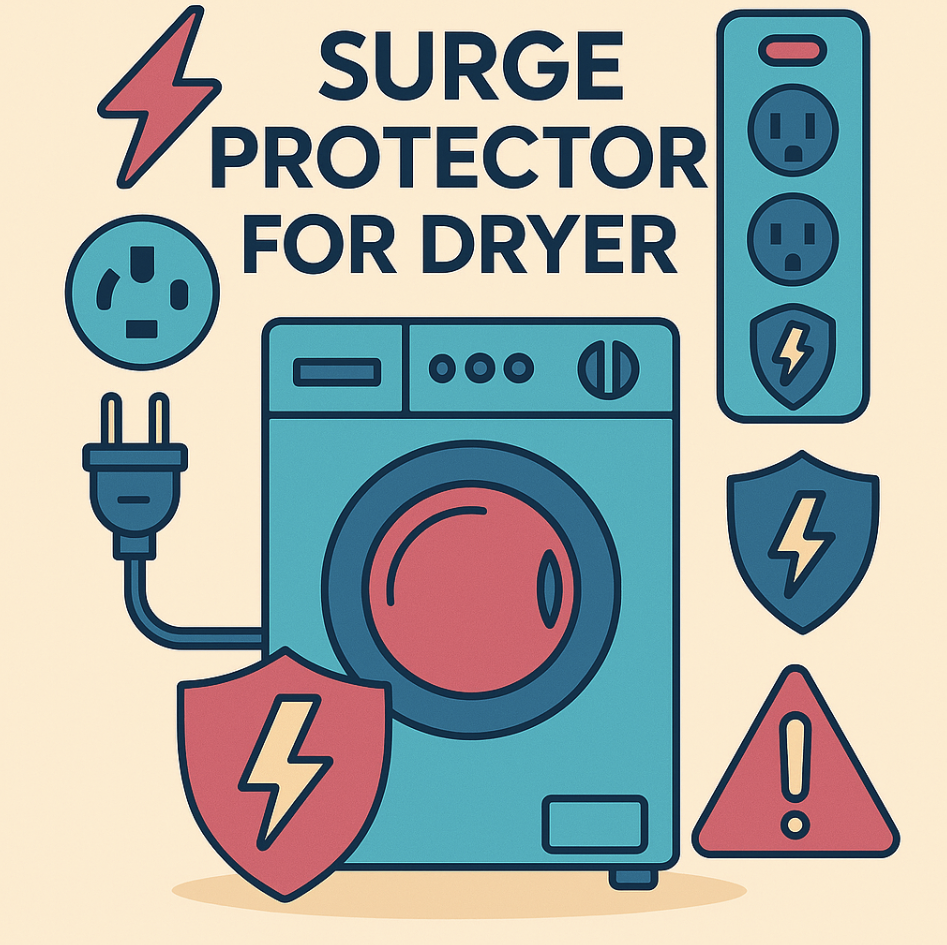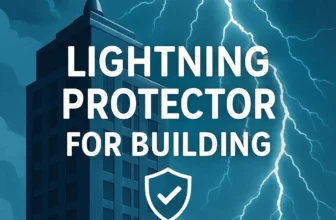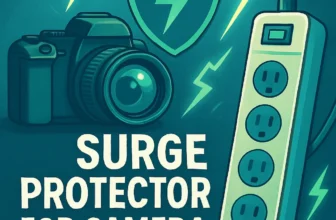Published By: Marc Edwards | Last updated on July 17, 2025 and reviewed by Editorial Team

Power surges can strike without warning, and your dryer is not immune to their damaging effects. These sudden spikes in electricity, often caused by internal sources like large appliances cycling on and off, send an overload of current through your home’s wiring. This surge can cause significant damage to your dryer’s sensitive electrical components, particularly modern models with advanced control boards.
Even a split-second surge can lead to costly repairs or permanent damage. A surge protector for dryer use offers a simple yet effective solution. It provides essential protection, ensuring your appliance stays safe and functional for years to come.
Why Power Surges Are a Concern for Dryers
What Are Power Surges?
A power surge is a sudden and brief spike in electrical voltage that exceeds the standard flow of electricity in your home. These surges can originate from both internal and external sources. Internally, large appliances like refrigerators or air conditioners cycling on and off can create small but frequent surges. Externally, events such as lightning strikes, downed power lines, or power grid malfunctions can cause more severe voltage spikes.
Even minor surges can gradually wear down your dryer’s electrical components over time. Larger surges, however, can cause immediate and irreversible damage. For example, a lightning strike near your home can send thousands of volts surging through your wiring, overwhelming your dryer’s circuitry in an instant.
While these events may seem rare, they happen more often than you might think. In fact, power surges contribute to billions of dollars in damages to electronics and appliances annually.
How Power Surges Can Damage a Dryer
Your dryer is not just a simple appliance; it’s a sophisticated machine with advanced control boards and electronic systems. These systems are designed to handle a specific range of voltage. When a power surge occurs, the excess voltage generates heat, which can fry delicate circuits and other internal components.
Repeated exposure to smaller surges can also shorten the lifespan of your dryer. Each surge chips away at its efficiency, leading to unexpected breakdowns and costly repairs.
For instance, the heating element or motor could fail prematurely due to the strain caused by voltage fluctuations. In extreme cases, a single powerful surge could render your dryer completely inoperable.
The financial impact of these damages can be significant. According to recent data, homeowners have filed thousands of insurance claims for surge-related damages, with average payouts exceeding $21,000 per claim. While insurance may cover some costs, the inconvenience and potential downtime of losing a critical appliance like your dryer can be frustrating.
Protecting your dryer from power surges is not just about avoiding repair bills. It’s about ensuring the reliability and longevity of an appliance you depend on regularly.
Do Dryers Typically Require Surge Protectors?
Are Dryers at Risk of Power Surges?
Dryers are particularly vulnerable to power surges, especially in homes with frequent electrical fluctuations. These surges often originate from within the home itself. For instance, when high-power devices like air conditioners or refrigerators cycle on, they can create sudden spikes in voltage.
These internal surges account for nearly 80% of all power surges, and dryers, being high-energy appliances, are particularly vulnerable.
Modern dryers rely on advanced electrical controls to manage features like digital timers, temperature settings, and custom drying cycles. These components are sensitive to even minor voltage spikes. Over time, repeated exposure to small surges can degrade these systems, leading to malfunctions or reduced efficiency.
A single large surge, such as one caused by a lightning strike or a power grid issue, can completely destroy the dryer’s circuitry.
Unlike older models with mechanical controls, today’s dryers depend heavily on electronics, making them more susceptible to damage. Protecting these appliances from surges is not just about avoiding repairs; it’s about preserving their functionality and extending their lifespan.
Without proper protection, you risk losing a critical household appliance to an unexpected surge.
Are Surge Protectors Commonly Recommended for Dryers?
Surge protectors are highly recommended for dryers, especially in homes with modern appliances. The advanced electronics in today’s dryers make them more prone to surge-related damage compared to older models. A surge protector acts as a shield, absorbing excess voltage before it reaches the dryer.
This simple device can prevent costly repairs and ensure the appliance operates smoothly for years.
However, not all surge protectors are suitable for dryers. Standard power strips with built-in surge protection are not designed to handle the high electrical load of a dryer. Instead, you need a dedicated surge protector rated for the voltage and amperage of your dryer.
These specialized protectors are built to withstand the heavy electrical demands of large appliances.
Using a surge protector for your dryer is a proactive step that saves money and frustration in the long run. It’s a small investment that offers peace of mind, knowing your appliance is safe from unpredictable power surges. Many homeowners overlook this precaution, only to face expensive repairs or replacements later.
Don’t wait for a surge to damage your dryer—take action now to protect it.
Benefits of Using a Surge Protector for Dryer
Protecting Your Dryer from Electrical Damage
Electrical surges can strike at any moment, and your dryer is always at risk. A surge protector acts as a shield, absorbing excess voltage before it reaches your appliance. Without this protection, even a minor surge can damage the dryer’s sensitive components, such as its control board or motor.
Modern dryers, equipped with advanced electronics, are particularly susceptible to sudden power surges.
Think about the cost of repairing or replacing a damaged dryer. It’s not just the financial burden; it’s also the inconvenience of being without a critical appliance. A surge protector for dryer use ensures that your machine remains safe from these unpredictable electrical events.
This small investment can save you from costly repairs and the frustration of dealing with a broken appliance.
Extending the Lifespan of Your Dryer
Every surge, no matter how small, chips away at your dryer’s efficiency. Over time, these repeated voltage spikes wear down its internal components, leading to premature breakdowns.
A surge protector prevents this gradual damage, allowing your dryer to operate at peak performance for years.
When you protect your dryer from electrical surges, you’re not just avoiding repairs—you’re extending its lifespan. This means fewer replacements and more value from your initial investment.
A high-quality surge protector can last for decades, providing long-term protection for your appliance. It’s a simple way to ensure that your dryer serves you reliably for as long as possible.
Peace of Mind for Homeowners
Owning a dryer comes with responsibilities, and protecting it from power surges should be a priority. A surge protector offers peace of mind, knowing that your appliance is safe from unexpected electrical issues. You won’t have to worry about storms, power grid failures, or internal surges damaging your dryer.
Safety is another critical factor.
Electrical surges can cause overheating or even short circuits, which may lead to fire hazards. A surge protector reduces this risk, adding an extra layer of safety to your home. When you invest in a surge protector for dryer use, you’re not just protecting an appliance—you’re safeguarding your household.
Ultimately, the benefits of using a surge protector far outweigh the cost. It protects your dryer, extends its lifespan, and provides the reassurance that your appliance is secure.
How to Choose the Right Surge Protector for a Dryer
Selecting the right surge protector for your dryer requires careful consideration. Not all surge protectors are created equal, and choosing the wrong one could leave your appliance vulnerable. To ensure your dryer remains safe from electrical surges, focus on key features, understand the types of surge protectors available, and follow proper installation and maintenance practices.
Key Features to Look For
When shopping for a surge protector, prioritize features that guarantee reliable protection for your dryer. Here are the most important ones:
-
Joule Rating: The joule rating measures how much energy the surge protector can absorb before failing. For a dryer, choose a surge protector with a joule rating of at least 1,000. Higher ratings provide better protection, especially for appliances with sensitive electronics.
-
Voltage and Amperage Compatibility: Ensure the surge protector matches the voltage and amperage requirements of your dryer. Most dryers operate on 240 volts, so the surge protector must handle this load without issue.
-
Response Time: A fast response time is critical. The surge protector should react instantly to voltage spikes to prevent damage to your dryer’s components.
-
Indicator Lights: Look for models with indicator lights that confirm the surge protector is functioning correctly. This feature provides peace of mind, ensuring your dryer is always protected.
Types of Surge Protectors for Dryers
Not all surge protectors are suitable for dryers. Understanding the different types will help you make an informed decision:
-
Dedicated Outlet Surge Protectors: These plug directly into the wall outlet and are specifically designed for high-energy appliances like dryers. They offer robust protection and are easy to install.
-
Whole Home Surge Protectors: Installed at your electrical panel, these devices protect all appliances in your home, including your dryer. They are ideal for comprehensive protection, especially in areas prone to frequent power surges.
-
Inline Surge Protectors: These are installed between the outlet and the dryer’s power cord. They provide targeted protection and are a great option if you want to safeguard just your dryer.
Avoid using standard power strips with built-in surge protection for your dryer. These are not designed to handle the high electrical load of large appliances and may fail under pressure.
Installation and Maintenance Tips
Proper installation and maintenance ensure your surge protector performs effectively. Follow these tips to maximize its lifespan and reliability:
-
Professional Installation: For whole home surge protectors, hire a licensed electrician to handle the installation. This guarantees the device is set up correctly and complies with safety standards.
-
Secure Connections: When using a dedicated outlet surge protector, ensure it fits snugly into the wall outlet. Loose connections can compromise its effectiveness.
-
Regular Inspections: Periodically check the surge protector for signs of wear or damage. Replace it immediately if you notice any issues, such as frayed wires or malfunctioning indicator lights.
-
Test Functionality: Use the indicator lights to confirm the surge protector is active. If the lights are off or flickering, the device may need replacement.
-
Replace After Major Surges: A significant power surge can deplete the surge protector’s capacity. Even if it appears functional, replace it after a major surge to maintain optimal protection.
Investing in the right surge protector for your dryer is a smart decision. It shields your appliance from electrical damage, extends its lifespan, and provides peace of mind.
Power surges pose a real threat to your dryer, especially in areas with unstable electrical grids or frequent storms. Investing in a surge protector for dryer use is a smart decision that protects your appliance from unexpected electrical damage. This small device not only extends the lifespan of your dryer but also saves you from costly repairs and unnecessary frustration.
Select a surge protector with the right features, such as a high joule rating and proper voltage compatibility, and ensure it is properly installed. Protect your dryer today and enjoy peace of mind for years to come.
FAQ
What is a surge protector, and how does it work?
A surge protector is a device designed to shield your appliances from sudden voltage spikes. It works by diverting excess electricity away from your dryer or other connected devices, ensuring they only receive the standard voltage they need to operate. When a power surge occurs, the surge protector absorbs or redirects the extra energy, preventing it from damaging your appliance’s sensitive components.
Can I use a regular power strip as a surge protector for my dryer?
No, a regular power strip is not suitable for protecting your dryer. Dryers require a dedicated surge protector that can handle their high voltage and amperage needs. Standard power strips are designed for smaller electronics like computers or TVs and may fail under the heavy electrical load of a dryer. Always choose a surge protector rated explicitly for large appliances.
How do I know if my dryer needs a surge protector?
If you live in an area prone to frequent storms, power outages, or electrical fluctuations, your dryer is at risk of power surges. Modern dryers with advanced electronic controls are especially vulnerable.
Even if your home has a stable electrical grid, internal surges caused by other high-energy appliances cycling on and off can still damage your dryer over time. A surge protector provides an added layer of security.
What features should I look for in a surge protector for my dryer?
When selecting a surge protector for your dryer, prioritize these features:
-
High Joule Rating: Choose one with at least 1,000 joules for robust protection.
-
Voltage Compatibility: Ensure it matches your dryer’s 240-volt requirement.
-
Indicator Lights: These confirm the device is functioning correctly.
-
Durability: Opt for a model built to withstand heavy electrical loads.
These features ensure your dryer remains safe and operational for years.
Is it difficult to install a surge protector for a dryer?
Installing a surge protector for your dryer is straightforward if you choose a plug-in model. Simply connect it between the wall outlet and your dryer’s power cord. For whole-home surge protectors, professional installation by a licensed electrician is necessary.
Proper installation ensures the device functions effectively and complies with safety standards.
Should I use a surge protector for my washer as well?
Yes, washers face similar risks from power surges as dryers. Both appliances rely on sensitive electronic components that can be damaged by voltage spikes. Using a surge protector for washer and dryer units ensures comprehensive protection for your laundry appliances, giving you peace of mind.








